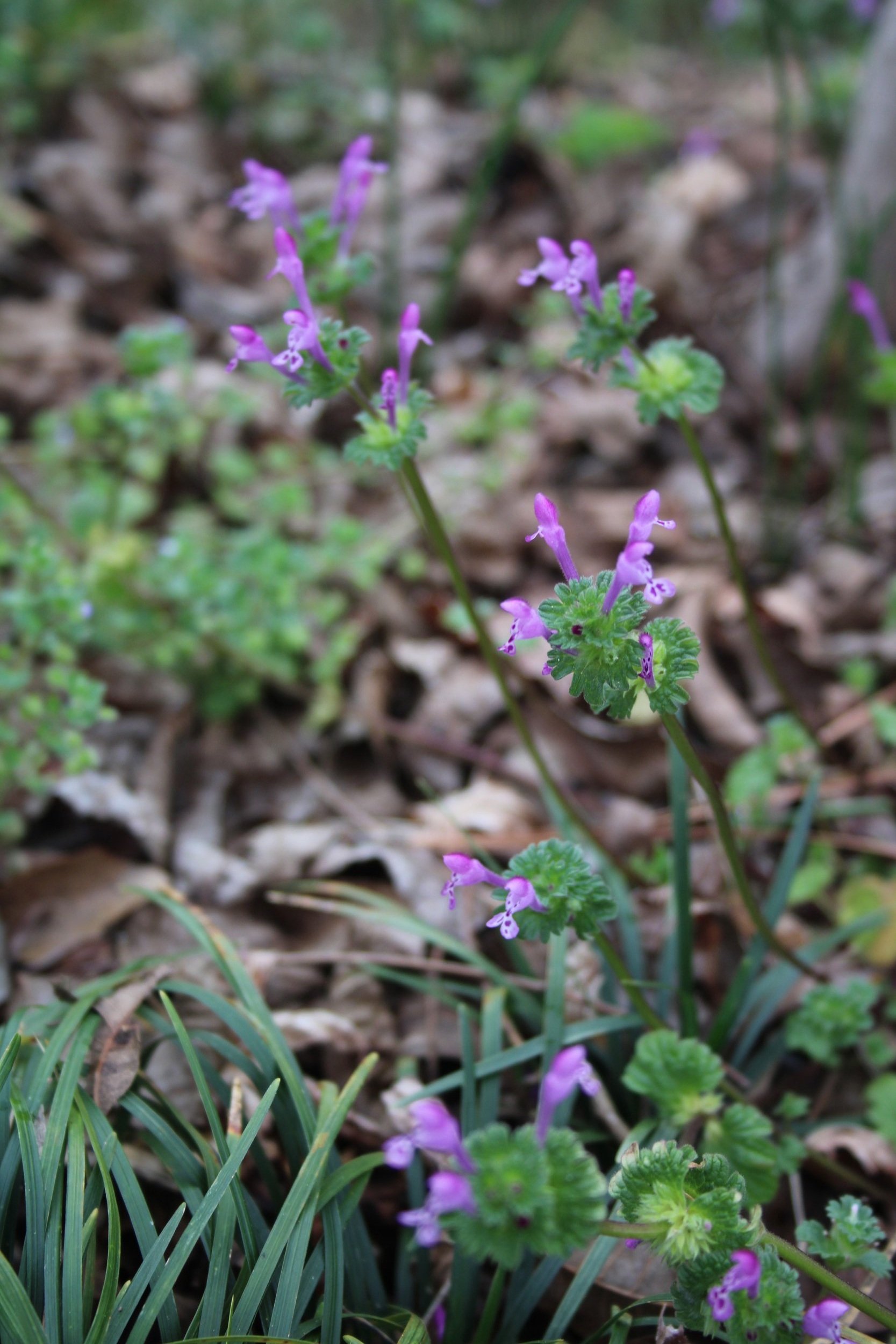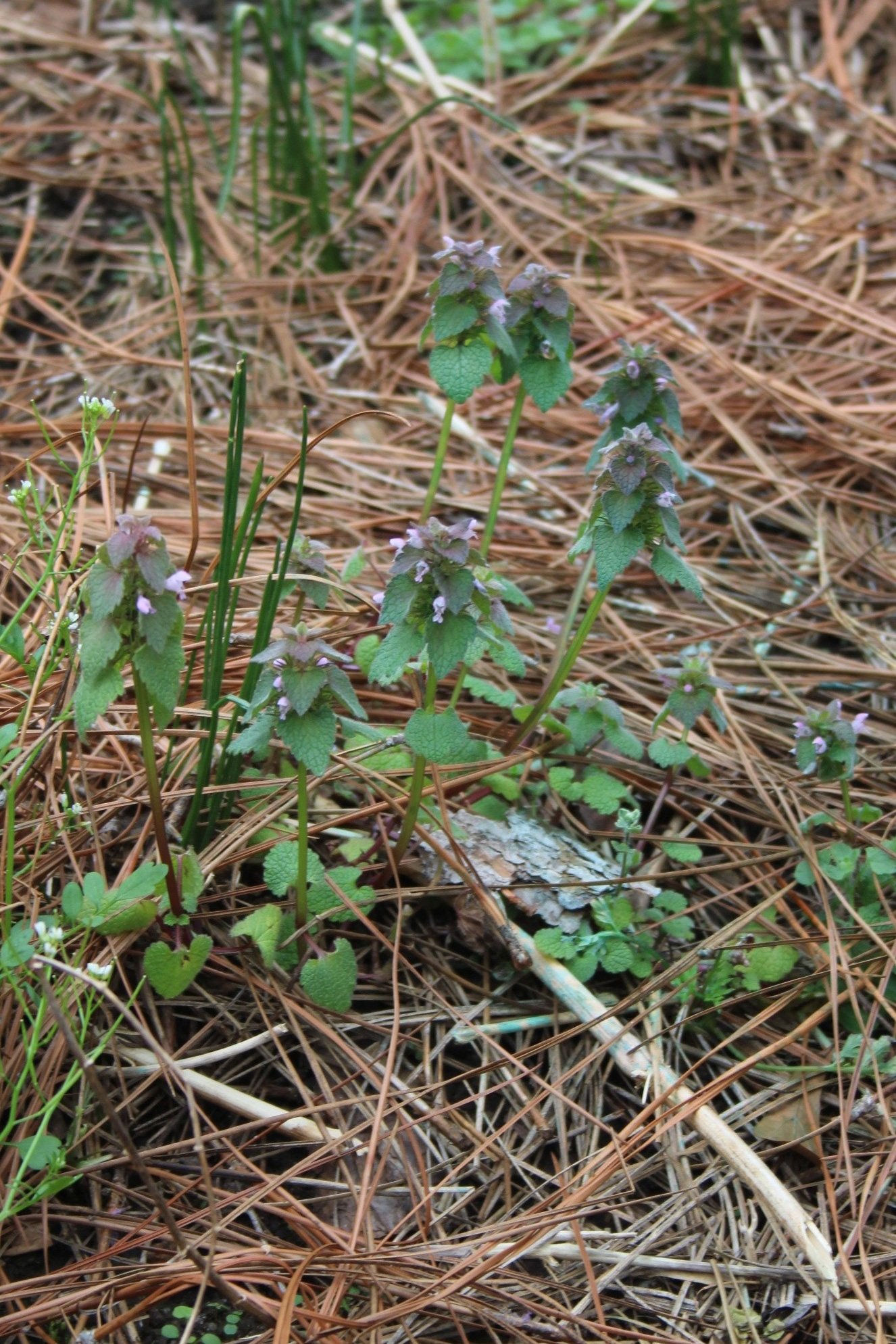Ugly clumps of wild garlic leaves are marring the dormant zoysia grass around my home garden and the mixed grasses in my pasture. Wild garlic is Allium vineale, a member of the lily family. The strong oniony stench of bruised leaves is anything but lily-like. Mature leaves are 6 to 12 inches in length. Wild onion, Allium canadense, is similar in appearance but wild garlic has round, hollow stems while wild onion has flat leaves that are not hollow. Both these plants are winter perennials that emerge in late fall, grow throughout winter and early spring, then go dormant.
Wild garlic has a teardrop-shaped bulb with a fibrous mat of roots. If allowed to mature, stems will form flowers or bulblets at the top of the stem, resembling chives. Flowers may be pink, white, or lavender. If you decide to mow over the clump, do so before the flowers/bulblets have formed or you risk spreading the misery as seeds are discharged across your lawn.
Wild garlic will grow in any type of soil and any pH. It is both drought tolerant and bog tolerant. It prefers full sun but tolerates shade. It tolerates frosts and hard freezes.
Both wild garlic and wild onion resist eradication attempts. Years ago, I decided to ignore the clumps of wild garlic in my lawn since their appearance was short lived. Mistake! While the top growth is dormant, they are reproducing underground via bulb offsets. Without treatment, they come back larger and stronger from year to year.
“Treatment” can be chemical or manual. I always try to use a non-chemical approach as my first line of defense. Removal is a painstaking chore, best done after a soaking rain has softened the soil. In past years, I used an asparagus/knife weeder which resembles a long-handled screwdriver with a forked tip. My new tool of choice is a hori-hori. It has a wider forked blade that is serrated on one side with a sharp edge on the other. With the hori-hori, I am able to saw through sod and lift the entire clump of garlic bulbs, carefully ferret out the individual bulbs, then replace the lifted sod. The bulbs are further below soil surface than one might expect, so be prepared to dig several inches deep. Use a foam kneeling pad to save wear and tear on the body. Use disposable gloves to avoid stinky garlic hands.
If you choose to go the chemical route (and believe me, I’ve been there!), repeat applications of a nutsedge killer may be effective. In areas outside the lawn, a total vegetation, non-selective killer may be used. Because leaves are waxy, use a surfactant (a soluble product that makes the chemical spray adhere) to ensure lasting contact. Clemson University has an information sheet on best practices. Click HERE to read their information bulletin. There is NO effective pre-emergent herbicide.
While my war against wild garlic is purely for aesthetic reasons, farmers have a more serious concern. Cattle that eat wild garlic will produce garlic-flavored milk (yuck!) and poor-flavored meat. If it is harvested along with cereal grains, wild garlic causes an off flavor and even makes machinery gunk up. Farmers usually battle wild garlic with deep plowing in the fall, burying bulbs so deep underground that they cannot survive. Alternatively, or in addition to deep fall tillage, tilling can be done in the spring while the plants are small – one or two leaves. Simple mowing may weaken the plant, but it appears that frequent decapitation forces the underground bulb to become larger and larger. This is why I recommend hand digging with a tool rather than trying to pull them out. A broken stem leaves the enemy underground, gathering energy to rise again.






